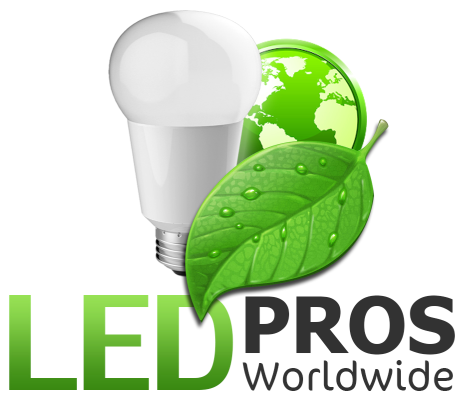As energy prices soar and the effects of climate change become increasingly apparent, the need for energy-efficient devices has never been greater. Opting for these solutions helps reduce carbon footprints, lower energy bills, and contribute to a more sustainable environment. One particular standout in this movement is energy-efficient LED lighting, a technology that has revolutionized both residential and industrial settings.
This article aims to explore the numerous benefits of energy-efficient devices, with a special focus on lighting systems like energy-efficient LED lighting, solar-powered LED lighting systems, and how businesses and homeowners can save money through LED lighting upgrades. Let’s dive into what makes these devices so important and how they can transform your energy consumption.
What Are Energy Efficient Devices?
Energy-efficient devices are designed to use less energy than traditional technologies, all while maintaining or improving performance. These devices often incorporate cutting-edge technology that reduces energy waste and optimizes efficiency. Some examples include:
– LED lighting systems
– Smart thermostats
– Energy-efficient appliances
– Solar-powered systems
– Advanced HVAC systems
The Importance of Energy Efficiency
Energy efficiency plays a crucial role in reducing both energy consumption and greenhouse gas emissions. Here are a few reasons why energy-efficient devices are essential:
1. Cost Savings: Energy-efficient devices lower energy consumption, which translates directly into lower utility bills.
2. Environmental Impact: Reduced energy usage means fewer carbon emissions, contributing to environmental sustainability.
3. Enhanced Performance: Today’s energy-efficient devices, especially energy-efficient LED lighting, offer superior performance compared to their traditional counterparts.
4. Longevity: Energy-efficient devices often last longer, reducing replacement costs.
The Rise of Energy Efficient LED Lighting
Among the various energy-saving technologies available today, energy-efficient LED lighting stands out as one of the most impactful. Unlike traditional incandescent or fluorescent bulbs, LED (Light Emitting Diode) lights are designed to convert electricity into light with far less energy wasted as heat.
Why Choose Energy Efficient LED Lighting?
1. Lower Energy Consumption: LED lighting uses up to 75% less energy than incandescent bulbs.
2. Longer Lifespan: LEDs last significantly longer, typically over 25,000 hours compared to 1,000 hours for incandescent bulbs.
3. Better Light Quality: LED lights offer better color rendering and can be tailored to suit various environments, from warm residential lighting to bright industrial setups.
4. Low Heat Output: Traditional bulbs waste much of their energy as heat. LEDs, on the other hand, remain cool to the touch.
5. Versatility: LEDs come in a wide range of shapes, sizes, and brightness levels, making them suitable for everything from home lighting to industrial and outdoor applications.
The Impact of LED Lighting Upgrades
For those looking to upgrade their lighting systems, energy-efficient LED lighting provides a perfect solution. Not only can it lower energy consumption, but the reduced heat output also decreases the need for cooling systems, further driving down costs. Businesses can save a significant amount of money through lighting upgrades, particularly in large commercial spaces where lighting is a major part of energy consumption.
 |
Solar Powered LED Lighting Systems: A Step Further
Solar-powered LED lighting systems combine the benefits of LED lighting with renewable energy. These systems harness solar energy during the day and store it to power LED lights at night, offering a completely off-grid solution that reduces reliance on fossil fuels.
Benefits of Solar Powered LED Lighting Systems
1. Renewable Energy: Solar-powered systems don’t rely on traditional electricity grids, reducing energy bills and emissions.
2. Low Maintenance: Once installed, solar-powered LED lighting systems require minimal maintenance.
3. Increased Portability: Solar-powered lighting systems are perfect for remote areas where access to traditional power grids may be limited.
4. Energy Independence: By using solar energy, businesses and homeowners can reduce their dependence on non-renewable energy sources.
Common Energy Efficient Devices in Homes and Businesses
In addition to energy-efficient LED lighting and solar-powered systems, there are several other devices that can contribute to significant energy savings.
Smart Thermostats
Smart thermostats learn your temperature preferences and automatically adjust the heating and cooling in your home to save energy when it’s not needed. By programming your thermostat around your schedule, you can cut down on energy consumption without sacrificing comfort.
Energy Efficient Appliances
Energy-efficient appliances, like refrigerators, dishwashers, and washing machines, use less energy to operate. Many of these devices are ENERGY STAR® certified, meaning they meet strict energy efficiency guidelines set by the U.S. Environmental Protection Agency.
Advanced HVAC Systems
Modern HVAC (heating, ventilation, and air conditioning) systems are designed to use less energy while maintaining a consistent indoor climate. Coupled with smart thermostats, these systems can drastically reduce energy usage in both homes and businesses.
How LED Lighting Upgrades Save Money
The cost savings associated with LED lighting upgrades are hard to ignore. Let’s break down how these savings are achieved:
1. Lower Energy Costs: LED lights consume significantly less power, which can cut energy bills by up to 50-75%.
2. Reduced Maintenance Costs: Because LED lights last longer than traditional lighting systems, businesses can save money on replacement bulbs and maintenance.
3. Rebates and Incentives: Many regions offer incentives for businesses and homeowners to upgrade to energy-efficient LED lighting systems, further reducing the overall cost of the upgrade.
4. Improved Safety and Security: LED lights provide better illumination, which can enhance safety in commercial spaces, parking lots, and industrial settings.
Example: Warehouse Lighting Upgrade
Consider a large warehouse with traditional fluorescent lighting. By upgrading to energy-efficient LED lighting, the warehouse could see the following benefits:
– Energy savings: Up to 70% reduction in lighting energy use
– Improved work environment: Better lighting quality for workers
– Lower maintenance costs: LEDs last significantly longer than fluorescents
Steps to Transition to Energy Efficient Devices
Transitioning to energy-efficient devices doesn’t need to be overwhelming. Follow these steps to start reducing your energy consumption:
1. Conduct an Energy Audit: An energy audit can identify areas where energy efficiency improvements can be made. Some companies, like LED PROS Worldwide, offer comprehensive energy audits for businesses.
2. Prioritize Upgrades: Start by upgrading the systems that consume the most energy, such as lighting, HVAC, and appliances.
3. Take Advantage of Incentives: Look for government rebates, tax incentives, and utility discounts to help offset the cost of upgrading to energy-efficient devices.
4. Monitor Energy Usage: Use energy monitoring systems to track your consumption and identify further areas for improvement.
FAQs
1. How much can I save by switching to energy-efficient LED lighting?
Switching to LED lighting can reduce your energy costs by 50-75%, depending on the scale of your operation and current energy usage.
2. What are the benefits of using solar-powered LED lighting systems?
Solar-powered LED lighting systems provide renewable, off-grid power, reducing energy bills and emissions while offering high portability and low maintenance.
3. How long do LED lights last compared to traditional bulbs?
LED lights can last over 25,000 hours, whereas traditional incandescent bulbs typically last around 1,000 hours.
4. Can I use energy-efficient devices in an industrial setting?
Absolutely. Energy-efficient devices, particularly LED lighting systems, are ideal for industrial settings due to their long lifespan, durability, and lower energy consumption.
5. Are there government incentives for upgrading to energy-efficient devices?
Yes, many local and federal governments offer incentives, rebates, and tax credits to encourage the adoption of energy-efficient technologies.
Conclusion
The move toward energy-efficient devices is a crucial step in reducing both environmental impact and operational costs. By integrating technologies like energy-efficient LED lighting, solar-powered systems, and smart devices, businesses and homeowners alike can reap significant savings while contributing to a more sustainable future.
LED lighting upgrades, in particular, offer a high return on investment, with immediate reductions in energy usage and long-term benefits like lower maintenance and replacement costs. Whether you’re a homeowner looking to reduce your electricity bill or a business aiming for sustainability, energy-efficient devices are the future of energy consumption.
